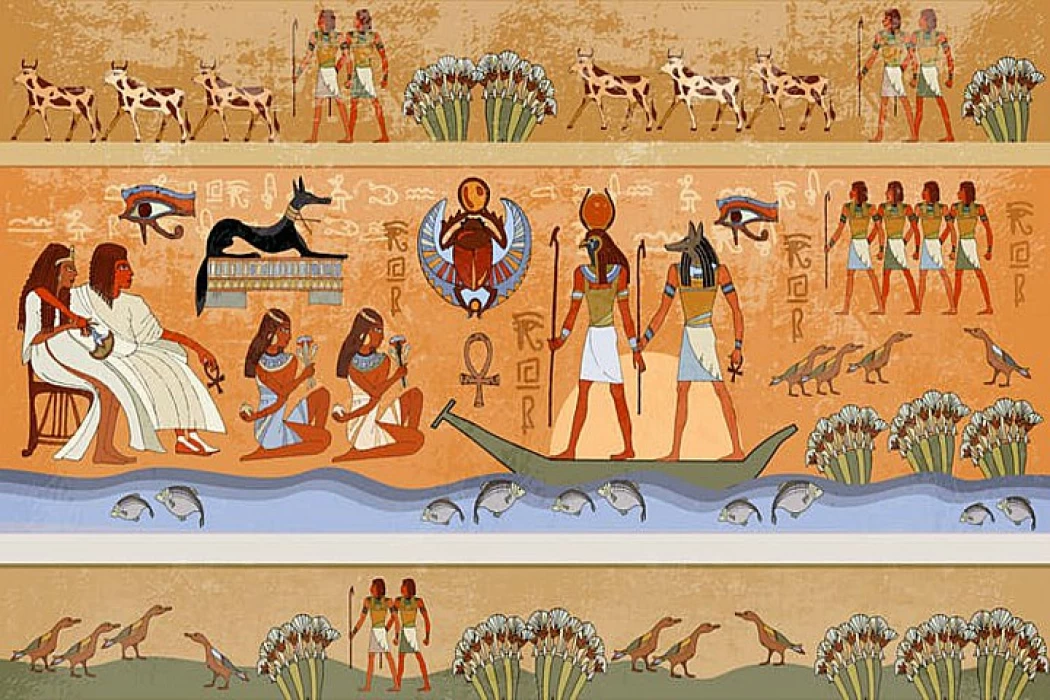
The Economy in Ancient Egypt
The Economy in Ancient Egypt
In the Ancient Kingdom of Egypt - a period that lasted for approximately 500 years (between 2686-2181 BC) - the country's economy was primarily agricultural and highly dependent on the Nile River. The river flooded the fields along its banks and provided a fertile alluvial agricultural soil. It also made it possible to transport goods throughout the country.
Although the ancient Egyptians did not use currencies until the Late Period, they used a kind of barter system, using standard sacks of grain and deben - an ancient Egyptian unit of measurement and weight with an approximate weight of 91 grams of copper and silver - where workers were paid in grain; a simple worker might earn up to 200 kg of grain per month, while a senior worker might earn 250 kg per month.
In the Old Kingdom of Egypt, the four dynasties that ruled from 2780 BC to 2263 BC. The Egyptian economy was mainly agricultural, dependent on the flooding of the Nile and the cultivation of fertile lands in the valley supplied by the Nile with water and silt, and facilitated the transport of crops and goods as well, but the accumulation of these riches was not used for the welfare of the population as much as the construction of royal tombs, and also allowed the possibility of transporting goods throughout the country as agricultural lands were subject to the authority of the king and his orders, and was also dependent to some extent on the centralised administration of the state.
This system also included formal and informal networks of redistribution of wealth and interests, as the societal system in this period was similar to feudal systems consisting of a large landowner class, where peasants were linked to work on the lands of large landowners within the work of serfdom ‘slavery’ and later developed into collective forced labour for all peasants living within the framework of the property of this or that feudal lord.
The notables of estates and estates were wealthy, but they worked hard to achieve that wealth, and they were responsible for ensuring that things in their estates ran smoothly and that their unpaid labour force was provided with adequate food, proper clothing, and shelter, and even, in the towns where the Giza pyramids were built, they were fed with good beef and fish. towns where the Giza pyramids were built, they fed them good beef and fish.
This may have been one of the privileges of the unpaid, indentured labour force coming from the various seminaries across the country to build the huge royal edifices where the labour force - Whether a royal official or a manual labourer hauling stones on a construction site, the labour force provided services to the throne and royal authority. In return, the throne returned the favour by redistributing food and other essential goods to the labour leaders, who in turn distributed them to the class far below them on the social ladder.
The economic system in the ancient Egyptian civilisation was unique, not content with food and survival, but devoting resources and energies to the construction and maintenance of huge tombs, pyramids and temples, a model that made Egyptian society stratified and divided between the rich landlords and officials and the poor common people.
Agricultural and livestock commodities such as cattle and manufactured products such as fabrics and textiles were counted, and the tax percentage was collected and stored in special silos and warehouses. Later, the taxes were distributed to projects such as the construction of pyramids, temples and royal tombs. Evidence of how these vaults were managed has been found at Abu Sir (Badrasheen), located in present-day Giza Governorate. Over three thousand years, the Pharaonic bureaucracy was able to develop tax policy and impose its authority, grain was stored for distribution in times of famine, and artisans and labourers were brought in for a small fee from the wealthy kingdom's treasury.














